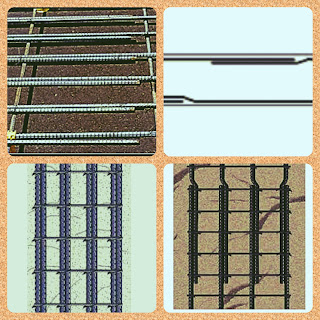Types of Building Foundations
Foundations are basically of two (02) types:
1) Shallow Foundation
2) Deep Foundation
Types of Building Foundations
1) Shallow Foundation: According to Terzaghi, if the depth of foundation is less than or equal to its width, then it is called a Shallow Foundation. This type of foundation transfer building load to the earth very near to the surface.
You may like this: Clear Cover of Concrete
Shallow Foundations are:
i) Isolated Footing: This is the most common type of foundation used for building construction and also most economical one. They are most commonly square and rectangular is size.
ii) Combined Footing: Combined footing support more than one column in a row. Combined footings are constructed when two or more columns are close enough and their isolated footing overlaps one-another.
iii) Strap Footing: A strap footing consists of two isolated footings connected with a structural strap or a lever. The strap connects the two footing such that they behave as one unit. The strap simply act as a connected beam and does not take any soil reaction.
iv) Mat or Raft Foundation: A mat or a raft is a large slab supporting a number of columns and wall under the entire or large part of a structure. Mat foundation required when the allowable soil pressure is low or where the columns or walls are so closed that individual footings overlap or touch each-other.
You may like this: Slump Test of Concrete
v) Wall Footing: This type of foundation runs along the direction of the wall and helps to transmit the load of the wall into the ground.
2) Deep Foundation: According to Tarzaghi, if the depth of foundation is greater than its width. then it is called Deep Foundation. A deep foundation is generally much more expensive than a shallow foundation.
You may like this: Workability of Concrete
Deep Foundations are:
It may be helpful for you: Field test of cement
i) Pile Foundation : A pile is a slender structural member made of steel, concrete or wood. A pile is either driven into the soil or formed in-situ by excavating a hole a filling it with concrete.
For details :Classification of Piles
ii) Pier Foundation: A pier is a large diameter concrete cylinder build in the ground. The difference between a drilled pier and a bored pile is basically of size.
iii) Well Foundation: A well foundation is similar to an open caisson. Well foundation can be constructed on a dry bed or after making a sand island.

















